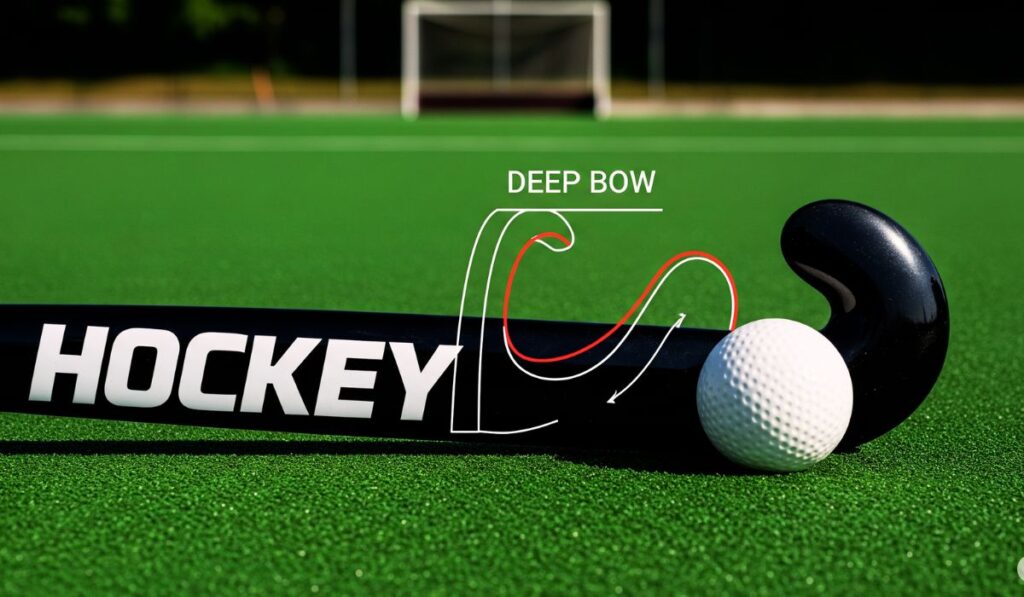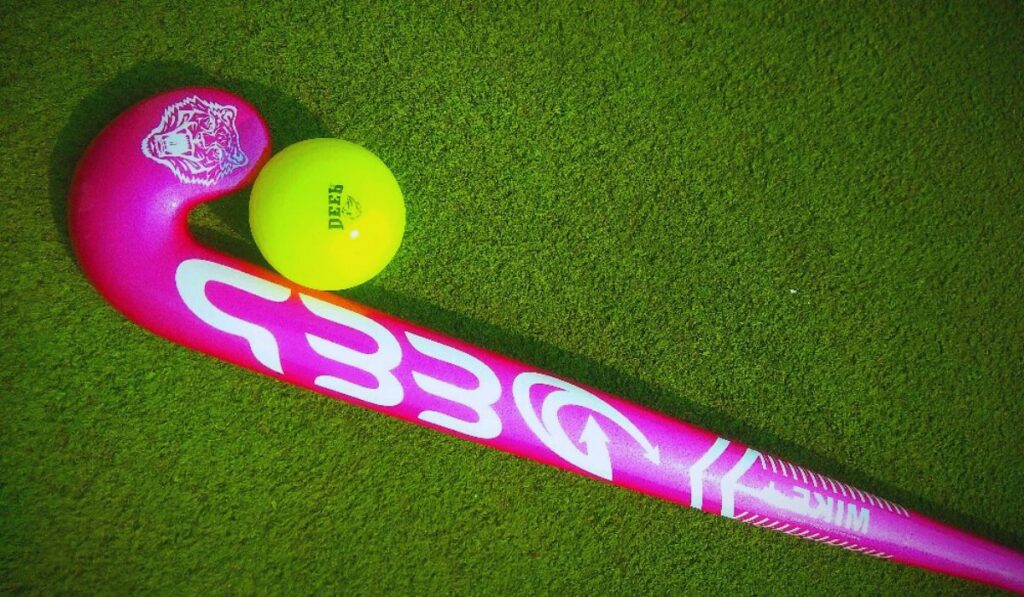“Deep Hockey Stick Secrets: The Hidden Weapon That Can Make or Break Your Game”
Introduction – The Allure of the Deep Hockey Stick
Hockey is a game that thrives on speed, precision, and instinct, but behind every breathtaking goal or defensive masterstroke lies a piece of equipment that silently shapes the game – the hockey stick. Among the many variations, the deep hockey stick holds a special place. It is both admired and misunderstood, celebrated for its control yet criticized for its demanding learning curve. To some, it feels like a loyal partner that enhances their play; to others, it feels like a heavy burden that slows them down. But what makes the deep hockey stick so powerful and so divisive?
What Exactly is a Deep Hockey Stick?
A deep hockey stick refers to the curvature in the blade or bow of the stick, which determines how the ball is lifted, flicked, and controlled on the turf. Unlike a standard flat bow, a deeper curve allows players to scoop, drag flick, and control aerial passes with ease. Imagine running your hand over its sleek, sculpted shaft – the smooth bend feels almost alive, promising precision yet warning of the mistakes it punishes if handled carelessly.
Why Players Fall in Love with It
There is a seductive quality to the deep bow. When a player first masters it, they realize they can send the ball soaring with minimal effort. The sensation of striking the ball with a deep hockey stick is unlike any other – the vibration through the grip, the clean sound of connection, the sight of the ball gliding through the air as if weightless. It feels empowering, almost magical. Many forwards and attacking midfielders cherish this feature because it opens the door to spectacular drag flicks, deceptive scoops, and thunderous shots on goal.

The Challenges Nobody Talks About
Yet, for all its beauty, the deep hockey stick carries its shadows. Beginners often find themselves frustrated because the same curve that enables aerial artistry also makes basic flat passes trickier. Controlling ground balls with accuracy requires patience, training, and an emotional willingness to endure failure before success. Defenders, too, sometimes feel betrayed when quick, clean tackles become harder due to the extra bend. This dual nature makes the deep hockey stick both a blessing and a curse, testing a player’s relationship with their skills and patience.
The Emotional Connection Between Player and Stick
Ask any hockey player, and they will tell you their stick feels like an extension of their body. The deep hockey stick, more than most, creates an emotional bond. It rewards finesse and creativity while punishing recklessness. Players speak of the confidence it gives them when attempting aerial passes or drag flicks, describing the thrill of the crowd gasping as the ball arcs into the net. Others, however, talk about heartbreak – missed passes, poor timing, and the sense that the stick betrayed them when they needed it most.
Why the Deep Hockey Stick Matters in Modern Hockey
Modern hockey is faster, more dynamic, and more demanding than ever. The need to surprise opponents with aerial play, flicks, and scoops makes the deep bow stick not just desirable but often essential. In penalty corners, the drag flick has become a lethal weapon, and it is the deep hockey stick that makes this move possible. Coaches push young players toward mastering it, knowing it could be the difference between a win and a loss in high-stakes matches.
The Sensory Experience of Playing with a Deep Hockey Stick
Imagine gripping the stick on a cold morning. The surface feels slick, the shaft sturdy under your hands. As you run across the turf, the sound of the ball connecting with the curved blade echoes like a whip crack. When you scoop the ball, it rises effortlessly, almost defying gravity, gliding through the air in a silent arc before landing in a teammate’s control. Every movement feels heightened, as though the stick is whispering to you, guiding your hands, yet daring you to slip.
The Hidden Downside – When Power Becomes Overwhelming
For some, the deep hockey stick’s strength becomes its weakness. Too much curve can limit versatility, making defensive clears or simple flat pushes less reliable. Younger players often struggle to adapt, and what was meant to be a tool of empowerment can feel like a cage restricting natural play. This tension creates a love-hate relationship that is as emotional as it is technical.
Choosing the Right Deep Hockey Stick – A Personal Journey
Selecting a deep hockey stick is not simply a matter of buying equipment; it’s a deeply personal decision. The weight, bow depth, grip texture, and balance all contribute to how it feels in a player’s hands. Trying different sticks is like trying on identities – one might feel too heavy, another too light, while the right one seems to breathe with you. This search often becomes part of a player’s hockey story, shaping how they grow in the game.
The Mystery and Magic of the Deep Hockey Stick
The moment you first pick up a deep hockey stick, there is an undeniable sense of curiosity. It doesn’t feel like any other stick you have held before; the exaggerated curve pulls you in, urging you to test its limits. The wood or composite shaft feels alive in your palms, whispering promises of powerful shots and dazzling control. Yet, with every promise comes a warning—the very same curve that gives you power can also demand ruthless precision. This duality makes the deep hockey stick one of the most seductive and controversial tools in modern hockey.
Why Players Obsess Over the Curve
There’s something magnetic about watching the ball cling to a blade, seemingly glued by invisible strings, as a player weaves effortlessly through defenders. This artistry is made possible by the deep curve of the hockey stick. It allows the ball to stay seated, controlled like a tamed beast, ready to be unleashed in a split second. For an attacking player, this control is intoxicating. The deep hockey stick becomes more than equipment—it becomes a paintbrush for strokes of genius on the turf. Yet obsession comes with consequences, and those who cannot master the control find themselves betrayed by the very curve they adore.
The Sensory Thrill of First Contact
Imagine the thud of turf beneath your cleats, the cold bite of evening air against your skin, and then the sudden sensation of ball meeting blade. With a deep hockey stick, this meeting feels amplified. The ball doesn’t simply strike; it settles into the hollow embrace of the curve, humming with potential energy. You feel the weight of possibility in your wrists, the electric tension running up your forearms. The sensory rush is addictive, making players return again and again for that perfect contact. It’s a tactile love affair, one forged in the union of carbon fiber and human touch.
The Controversy of Control
Of course, not everyone sings praises of the deep hockey stick. Coaches have often criticized its curve for breeding bad habits among players, especially younger ones. The deeper the curve, the easier it is to “cheat” your way into flashy moves without truly mastering the fundamentals of ball control. The stick can spoil you—luring you into relying on it rather than refining your natural skill. Critics argue that while a deep curve can dazzle the crowd, it may leave a player exposed when forced to rely on raw technique. In this tension lies the controversy that refuses to die.
Power Unleashed: The Shot of Dreams
When the ball sits in the pocket of a deep hockey stick, the shot feels different—charged, violent, yet elegant. A drag flick launched with such a curve can rocket off the turf, screaming into the net with breathtaking force. The sound alone—a sharp crack echoing through the field—is enough to send shivers through teammates and opponents alike. This power is what seduces players into adopting the stick. Forwards, in particular, crave this explosive release. It’s the difference between a hopeful strike and a goal that sears itself into memory. The deep hockey stick, when mastered, doesn’t just score—it devastates.
The Emotional Cost of Failure
But seduction has its darker side. When you misjudge the angle or mishandle the ball with a deep curve, the consequences are brutal. A pass goes astray, a shot lifts dangerously, or the ball escapes your control entirely. The embarrassment is sharper because the stick had promised you magic. In these moments, players feel betrayed—as though the stick exposed their flaws under a spotlight. The sting is emotional, the kind of failure that gnaws at confidence. And yet, much like a stormy romance, players often forgive and return, chasing the thrill of success again.
Why Professionals Take the Risk
You may wonder why top-level players, with so much at stake, continue to wield a deep hockey stick despite its risks. The answer is simple: the rewards are intoxicating. In a game where milliseconds determine glory or defeat, the extra whip of a drag flick or the deceptive control during a feint can be the edge needed. For elite forwards, especially penalty corner specialists, the deep hockey stick is a weapon, one they’d rather tame than abandon. It’s not just about playing safe—it’s about chasing the extraordinary, even if it means flirting with danger.

Training with the Deep Hockey Stick
To truly master this stick, training takes on an almost ritualistic quality. Players must re-learn angles, adapt footwork, and develop wrists strong enough to harness the curve’s potential. Hours are spent in solitude, ball rolling against turf in endless repetition. The stick teaches you patience, punishing arrogance and rewarding discipline. Over time, players learn to listen—not just to the coach, but to the subtle feedback of stick and ball. A deep hockey stick is not conquered; it is courted, much like an untamed partner who only offers brilliance when treated with respect.
The Seductive Sound of Drag Flicks
Perhaps the most enchanting aspect of the deep hockey stick is its role in the drag flick. Few sights in hockey rival the hypnotic curve of a ball launched skyward at blistering speed, arcing into the goal before the goalkeeper can even flinch. The sound—the crack of ball meeting blade—is visceral, a sensory thrill that lingers long after the match. Crowds gasp, teammates erupt, and the player is left with the intoxicating echo of perfection. It’s not just a move; it’s an anthem of what this stick can achieve in the right hands.
Cultural Shifts in Stick Preferences
Across different countries, the deep hockey stick carries cultural weight. In parts of Europe, players lean towards shallower curves for precision, while in Asia, the deep curve has found loyal fans for its deceptive flair. This divide highlights how hockey is as much about identity as it is about technique. Choosing a stick becomes a declaration—a statement of how you wish to play and be remembered. For some, the deep hockey stick is rebellion against tradition; for others, it is evolution, a step towards a faster, more thrilling game.
Conclusion – The Beauty and Burden of the Deep Hockey Stick
The deep hockey stick is not just a piece of equipment; it’s an emotional partner on the field. It represents ambition, risk, artistry, and frustration all at once. To master it is to embrace both failure and triumph, to accept that beauty often comes with a cost. Players who wield it successfully often describe an almost intoxicating joy – the thrill of lifting, flicking, and scoring in ways flat sticks could never allow. Others, however, turn away, preferring the safer, simpler option. But whether you love it or hate it, one thing is certain: the deep hockey stick has forever changed the way hockey is played, adding depth, danger, and undeniable beauty to the sport.


1 thought on “Deep hockey stick”